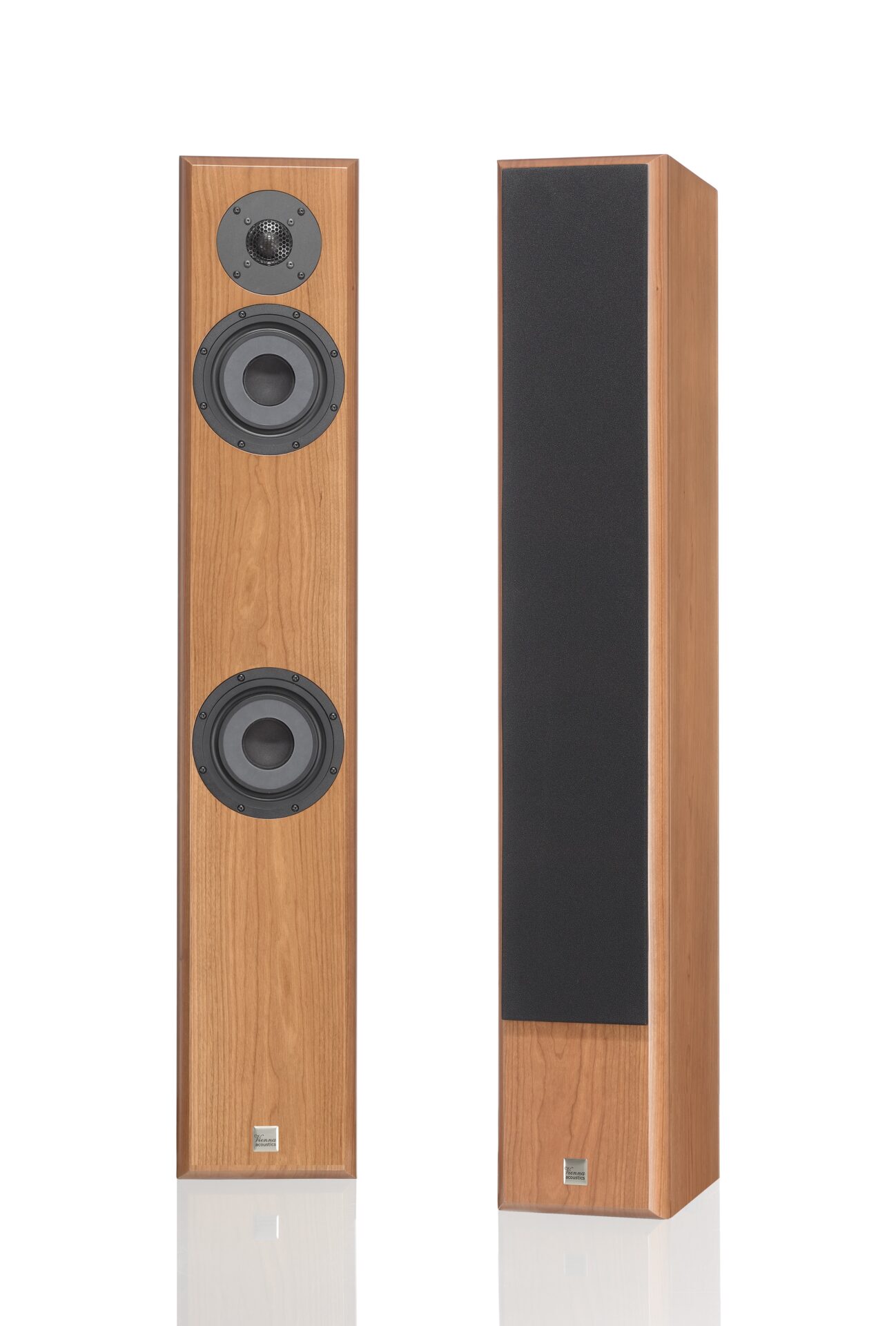What this small, unassuming and affordable VA speaker exhibits is an innate, an ineffable, an effortless sense of musical balance. That same sense of balance that escapes (and whose absence undermines) so many expensive, high-end systems: which utterly escapes most of the rooms at a show like Munich. Compare the Infinities to a serious separates system, one with wide bandwidth speakers and oodles of available headroom and their limitations are clear. They can’t match the scale, focus, transparency, dynamic range or resolution of a big system. But – and it’s a critical ‘but’ – unless that big system is dialled in, the little VA speakers might well be more musically coherent, with a better overall sense of proportion. Remove the big system from the equation and the Mozart Infinities’ shortcomings fade away too, hidden by that wonderfully natural balance and beautifully scaled perspective. The limitations are there, but they don’t intrude, as the VA speakers execute that hardest (and most valuable) of all audio tricks, covering their tracks.
I’ve bigged up the Infinities’ musical performance to such an extent that I might as well base the sonic description on something properly difficult to reproduce. It’s not just that Víkingur Ólafsson’s Debussey-Rameau (DGG483 7701) can – and should – sound astonishingly like a real piano in real space, I’ve heard it do so on some seriously impressive rigs. Playing it on the Mozart Infinities is just begging for them to fail… Except that isn’t quite how it pans out. Sure, the piano isn’t as dimensionally defined, doesn’t have the sheer scale or translucent harmonics that I get out of the big CH set up with a pair of equally big speakers – but then there isn’t a single element, in fact, not a single cable in that system that costs less than the Mozarts! But what you do get is a solid, stable instrument, planted between and separate from the speakers. You get the body and weight, the layered complexity and glorious decay. You get a sense of note weight and phrasing, musical impetus and direction. And you soon forget what’s missing in favour of what’s very present indeed. Streamed via Tidal (the VAs will shortly be compatible with Qobuz, which I generally prefer), there’s none of the fractured or stilted rhythmic discontinuity that afflicts so many (even very expensive) streaming systems. This is a world away from that dry, disjointed musical wasteland that so often seems to pass muster as high-res replay. Ólafsson’s gracefully fluid playing is just as captivating as ever – and that’s via Ethernet!
Okay – you’ve got me! I couldn’t help but wonder what happens if you play the equivalent disc through the Mozart’s digital or analogue inputs?
I started off by wheeling in the Heed transport and hooking it up via the co-axial S/PDIF connection. It delivered a worthwhile improvement in the note-to-note definition so important to solo piano, but looking at the disc spinner sat there inevitably poses questions about the Mozart’s analogue inputs. So I swapped out the Heed for a Cyrus CD8 SE player. Connecting both the S/PDIF and RCA line inputs to the master speaker, I was able to directly compare the DAC in the Cyrus to the one in the VA speaker, with interesting results. The Cyrus player’s analogue output offered a rounder and slightly richer presentation, with a more explicit sense of pace and timing – but the differences were subtle and the VA DAC countered with better delineation of note weight and a more layered sense of harmonics. Which is impressive on both counts. The speaker’s internal DAC is clearly no slouch (and doubtless benefits from the intervening years of digital development), but the analogue inputs are actually pretty impressive too. Just for fun, I inserted the CH Precision D1.5 CD/SACD player/transport into the system – a unit that costs four times the price of the speakers. The player’s dual-mono internal DACs and balanced analogue outputs certainly trumped its S/PDIF connection to the VA DAC, with greater weight, musical energy and vitality, presence and spatial definition. But once again, the D1.5’s superior transport mechanism upped the speaker’s game, the internal DAC gapped by the player’s on-board dual-mono convertors, but far from embarrassed. And what the whole exercise did demonstrate convincingly was just how responsive the VA system is to input quality. Just as the qualities of different streaming services were obvious, so the benefits of the D1.5 transport over the Cyrus or Heed, the superiority of the CH DACs’ performance to the one in the Cyrus, was clearly apparent. Source quality is king in any audio system and this set of comparisons underlined (emphatically) that not only are the Mozart Infinities a bona fide hi-fi system, they work in exactly the same way and deliver exactly the same musical benefits as any other high-quality set-up. They might be viewed as a ‘lifestyle’ system, but boy do they respond to input, both in terms of signal quality and set up.



